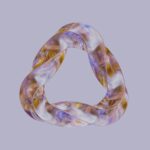Support our educational content for free when you purchase through links on our site. Learn more
[2023] Cool Things to 3D Print and Sell: A Comprehensive Guide

Are you a 3D printing enthusiast looking to turn your hobby into a profitable venture? Look no further! Our team at 3D Printed™ has compiled a comprehensive guide to help you discover the coolest things to 3D print and sell. From unique home decor items to personalized accessories, we've got you covered. So, grab your filament and let's dive into the world of 3D printing for profit!
Table of Contents
- Quick Answer
- Quick Tips and Facts
- What 3D Printed Items Should I Sell?
- What Are the Most Selling 3D Products?
- Is It Profitable to Sell 3D Prints?
- Is It Legal to Sell 3D Printed Items?
- Other Factors to Consider
- FAQ
- Conclusion
- Useful Links
- Reference Links
Quick Answer
If you're looking to 3D print and sell items, there are plenty of options to explore. Some popular choices include personalized phone cases, home decor items like vases and planters, unique jewelry pieces, and even customized figurines. These items have a wide market appeal and can be easily customized to cater to individual preferences. Check out some of the best-selling 3D printers for your business on Amazon and Walmart.
Quick Tips and Facts
Before we dive deeper into the world of 3D printing for profit, here are a few quick tips and interesting facts to get you started:
- Quality Matters: Focus on producing high-quality prints that stand out from the competition. Invest in a reliable 3D printer and use premium materials for the best results.
- Customization Is Key: Offering personalized options can greatly increase the appeal of your products. Consider adding customizable features or offering different color options.
- Market Research: Take the time to research current trends and popular niches in the 3D printing market. This will help you identify profitable opportunities.
- Pricing Strategies: Find the right balance between pricing your products competitively and ensuring a reasonable profit margin. Consider factors such as material costs, printing time, and market demand.
Now, let's explore some of the best items to 3D print and sell!
What 3D Printed Items Should I Sell?
When it comes to choosing 3D printed items to sell, it's important to consider both market demand and your own interests. Here are some popular options to consider:
1. Personalized Phone Cases
✅ Check price on Amazon ✅ Check price on Etsy
Phone cases are a hot commodity, and personalized 3D printed phone cases take it to the next level. Customers love having unique designs that reflect their personality. You can offer custom designs, engravings, or even 3D printed photos on phone cases.
2. Home Decor Items
✅ Check price on Amazon ✅ Check price on Etsy
From vases and planters to lampshades and wall art, there's a wide range of home decor items you can 3D print and sell. Experiment with different designs, colors, and materials to create unique pieces that catch the eye of potential buyers.
3. Jewelry and Accessories
✅ Check price on Amazon ✅ Check price on Etsy
3D printed jewelry is gaining popularity for its intricate designs and customization options. From earrings and necklaces to bracelets and rings, there's a vast market for unique and personalized accessories. Experiment with different materials like metal-infused filaments for a premium touch.
4. Figurines and Collectibles
✅ Check price on Amazon ✅ Check price on Etsy
Collectibles and figurines are highly sought after by enthusiasts and collectors. 3D printing allows you to create intricate designs that are not easily replicated. Consider catering to specific fandoms or creating custom figurines based on customer requests.
What Are the Most Selling 3D Products?
While the popularity of 3D printed products can vary over time, certain items tend to have consistent demand. Here are some of the most selling 3D products:
- Phone Accessories: Phone cases, stands, and holders.
- Home Decor: Vases, planters, wall art, and lampshades.
- Jewelry: Earrings, necklaces, bracelets, and rings.
- Figurines: Collectibles based on popular characters or customizable figurines.
- Gaming Accessories: Customized controller grips, stands, and keycaps.
- Prototypes and Models: Architectural models, product prototypes, and miniatures.
Remember, market trends can change, so it's essential to stay updated and adapt your product offerings accordingly.
Is It Profitable to Sell 3D Prints?
The profitability of selling 3D prints depends on various factors, including your pricing strategy, production costs, and market demand. Here's what you need to consider:
Pros:
- Low Overhead Costs: 3D printing allows you to start a business with minimal upfront investment.
- Customization Opportunities: Offering personalized products can command higher prices and attract a niche customer base.
- Marketplace Platforms: Online marketplaces like Etsy provide a ready-made platform to showcase and sell your products.
Cons:
- Time-Consuming Production: Producing 3D prints can be time-consuming, especially for larger or complex items.
- Competition: The 3D printing market is growing, which means you'll face competition from other sellers.
- Material and Equipment Costs: While 3D printing is cost-effective in the long run, initial material and equipment costs can add up.
To maximize profitability, consider optimizing your production process, finding cost-effective material suppliers, and continuously adapting your product offerings based on market demand.
Is It Legal to Sell 3D Printed Items?
The legality of selling 3D printed items depends on various factors, including intellectual property rights, licensing agreements, and local regulations. Here's what you need to know:
- Intellectual Property: Respect copyright and trademark laws. Avoid selling designs that infringe on someone else's intellectual property rights.
- Licensing Agreements: Some designs may be available for personal use only. Ensure you have the necessary licenses to sell certain items.
- Local Regulations: Research local laws and regulations regarding the sale of 3D printed items, especially if you plan to sell items that could be considered weapons or hazardous.
It's always advisable to consult with a legal professional to ensure you're operating within the boundaries of the law.
Other Factors to Consider
In addition to the items mentioned above, there are a few other factors to consider when starting a 3D printing business:
- Marketing and Branding: Develop a strong brand identity and market your products through social media, online marketplaces, and your own website.
- Customer Service: Provide excellent customer service to build a loyal customer base and encourage positive reviews and referrals.
- Quality Control: Implement quality control measures to ensure consistent and high-quality prints.
- Shipping and Packaging: Invest in sturdy packaging materials to protect your products during shipping and create a positive unboxing experience for customers.
By paying attention to these factors, you can set yourself up for success in the world of 3D printing for profit.
FAQ

Q: What are the best-selling 3D printers for beginners?
A: Some popular 3D printers for beginners include the Creality Ender 3 and the Prusa i3 MK3S. These printers offer a good balance between affordability and print quality.
Q: How much should I charge for 3D printed items?
A: Pricing depends on factors such as material costs, printing time, and market demand. Research similar products and consider the value you're providing to customers when determining your prices.
Q: Can I sell 3D prints of copyrighted characters?
A: Selling 3D prints of copyrighted characters without proper licensing is illegal. Respect intellectual property rights and create original designs or obtain the necessary licenses.
Q: How can I market my 3D printed products?
A: Utilize social media platforms, online marketplaces, and your own website to showcase your products. Engage with potential customers, offer promotions, and collaborate with influencers to increase visibility.
Q: Are there any books or resources to help me start a 3D printing business?
A: Yes! Check out "The 3D Printing Handbook" by Ben Redwood and Filemon Schöffer or "Getting Started with 3D Printing" by Liza Wallach Kloski and Nick Kloski. These books provide valuable insights and guidance for starting a 3D printing business.
Conclusion
With the right approach and creativity, 3D printing can be a profitable venture. By focusing on popular items like personalized phone cases, home decor pieces, jewelry, and figurines, you can tap into a market hungry for unique and customizable products. Remember to consider factors like profitability, legality, and market demand when choosing what to 3D print and sell. Happy printing and selling!
Useful Links

- Shop 3D Printers on Amazon
- Shop 3D Printed Phone Cases on Amazon
- Shop 3D Printed Home Decor on Amazon
- Shop 3D Printed Jewelry on Amazon
- Shop 3D Printed Figurines on Amazon
- Shop 3D Printers on Walmart
- Shop 3D Printed Phone Cases on Etsy
- Shop 3D Printed Home Decor on Etsy
- Shop 3D Printed Jewelry on Etsy
- Shop 3D Printed Figurines on Etsy
- 3D Printed™ – Your Guide to All Things 3D Printing
Reference Links





